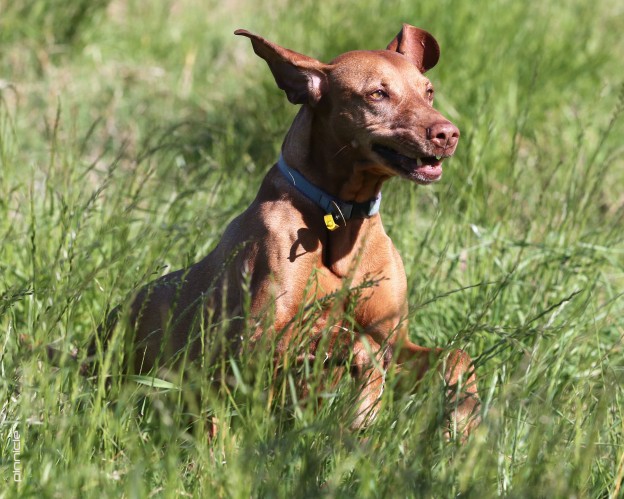
Dr Paul Ramos, veterinary surgeon at Lort Smith Animal Hospital, provides his top bushfire survival tips to protect your pet.
In the 2009 Victorian bushfires, known as “Black Saturday”, the tragic loss of human and animal life was overwhelming. Sadly, more than a million animals, including pets, livestock and native wildlife, perished in this tragedy. It is now clear that being prepared and having a plan are key to improving survival rates.
Lort Smith Animal Hospital is developing an emergency response plan for animal rescue in the event of a bushfire, and pet owners can play their part in reducing the number of animals who will require veterinary help.
Each family should prepare a Bushfire Survival Plan for the entire household and included in that should be a Pet Evacuation Plan and Relocation Pack.
Pre-summer planning
Make sure your pets are microchipped (it’s not just dogs and cats that can be microchipped, you can also register guinea pigs, ferrets, larger birds and reptiles). Your dog should also wear a collar identification tag at all times and, of course, make sure the contact information is current. It’s not a bad idea to include an emergency contact outside your area that is linked to your pet’s records.
Your dog’s relocation pack is only going to be of use if it is accessible. There’s no point in preparing a comprehensive pack then letting it go lost under household clutter! As soon as summer is approaching, get it out, check that everything is still viable and up to date, and store it somewhere handy.
Where’s the pooch?
Communication is vital in any emergency, so make sure your neighbours, family and friends know your evacuation plan. Inform them if you decide to evacuate your dog early to boarding kennels or other temporary accommodation outside of the danger zone, so that no one unnecessarily goes searching for your pet.
On high-risk days, if you are going out, decide whether to take your animals to a safer location before leaving home because if a fire gets started, you may not be allowed back for some time. Remember, on Code Red days, the safest place for all of you to be is away from high-risk bushfire areas.
If you are home, put your pets inside the house so they are close by. If the situation deteriorates, confine them early. Pets are safest inside a secure room such as a bathroom or laundry with plenty of food and water. Make sure you have wet towels and woollen blankets available to cover and protect your pets. Importantly, practise how you will move your pets if you leave. It takes longer than you think.
After the fire
Hopefully, after the fire, you and your dog will simply return home and resume normal life. Keep an eye on your dog, particularly if you have come face to face with the blaze. The severity and extent of burns may not become apparent for up to two weeks. Remember that dogs tend to mask their pain — it’s a survival instinct that protects them from being singled out as the weakest member of their pack.
Apart from burns and anxiety, the next most common affliction is likely to be a respiratory problem from smoke inhalation, so watch for symptoms such as coughing, breathing difficulties or just being generally off colour. When possible, get your vet to give your dog a thorough health check.
Pet Bushfire Relocation Kit
Put together a pack with the following items:
- Non-perishable food and water
- A bowl for each pet
- Spare collars and leads for each dog
- A carrier for cats and smaller pets
- Bedding, old towels and a woollen blanket
- A pet first-aid kit (see below) including any medications (along with a written list of what they are), your vet’s contact details and your pet’s medical history, including proof of vaccination
First-Aid Kit for dogs
Keep in mind not everything that works on humans is suitable for dogs and never administer human drugs or prescriptions without first checking with your vet.
Start by getting a waterproof kit container and write on it, in waterproof ink, the phone numbers for your vet, the closest emergency animal hospital, the RSPCA and your local council rangers. Also, list your own name, address and phone numbers. Include inside:
- Any medications (along with a written list of what they are) and your pet’s medical history, including proof of vaccination
- First-Aid guide and CPR instructions (or better yet take a course)
- Latex or nitrile exam gloves — for the protection of both you and your pet
- A muzzle fitted for your dog — even the most placid animal may bite if injured and frightened — and a triangular bandage to use as a spare
- Tweezers
- Blunt-ended scissors
- Saline water to wash out any wounds
- Antiseptic wash or wipes — look for non-stinging preparations such as chlorhexidine or Betadine. Rubbing alcohol is not good for open sores or wounds
- Gauze rolls (for bandaging, stabilising joints, making a muzzle) and swabs
- Non-adherent bandages
- Adhesive tape
- Vet Wrap — this is a conforming wrap used over bandages that comes in a variety of colours and sizes. It clings to itself and is semi-watertight. Make sure you don’t wrap it too tightly — it’s best to unwrap it from the roll, then use it for the bandage with very light tension. Ask your vet which would be most suitable for your pet
- Dog booties or little socks (to cover wounded paws)
- Sterile eye wash and eye lubricant (available at your vet clinic)
Alternatively, you can purchase a ready-made kit such as a St John’s Pet First Aid kit.
Here are just a few things that can make life with your dog a bit easier - see them now on our DOGSLife Directory



